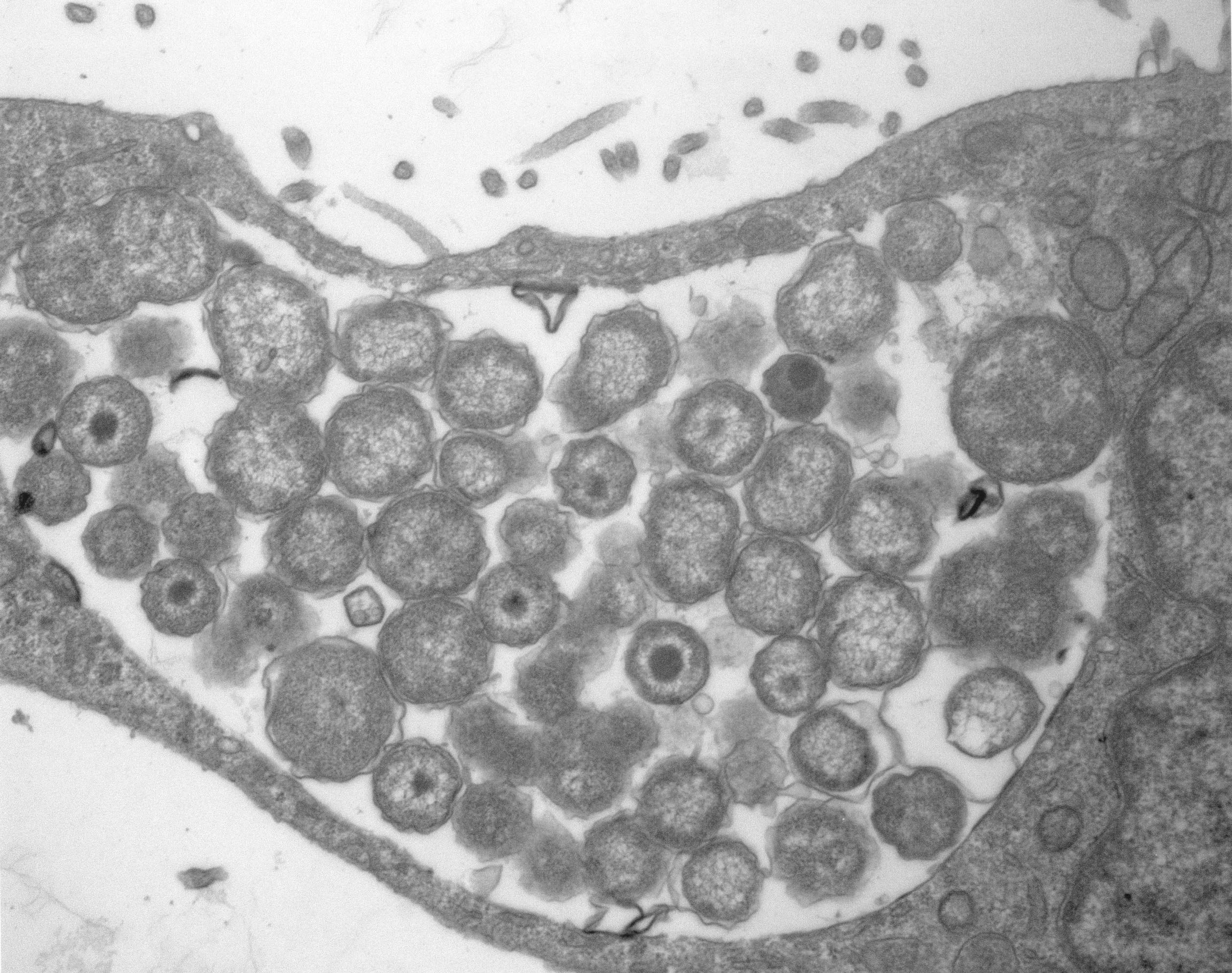Chlamydia trachomatis
C. trachomatis is the most common sexually transmitted pathogen of humans, with an estimated 89 million new cases occurring world wide each year. Around one million cases are reported per year in the USA, and an estimated 10 million new cases of chlamydial genital tract infection per year in Europe, with the prevalence of C. trachomatis infection in unscreened asymptomatic women ranging from 1.7 - 17% depending upon the setting, context and country.
Clinical features: Chlamydia trachomatis is comprised of two human biovars: the trachoma and lymphogranuloma venereum (LGV). The LGV biovar is remarkable for its ability to cause systemic disease. LGV is commonest in tropical areas of the world. The trachoma biovar causes trachoma, sexually transmitted disease, some forms of arthritis, and neonatal inclusion conjunctivitis and pneumonia.
Trachoma is a chronic conjunctivitis caused by infection with chlamydial strains belonging to the so called ocular serovars A, B, Ba or C. In developed countries, C. trachomatisserovars D to K is thought to be the cause of around 50% of cases of symptomatic non specific urethritis in men. It has been also associated with prostatitis and epididymitis and a possible cause of male infertility. In women, the prime target of chlamydial infection in the lower genital tract is the columnar epithelial cells lining the endocervical canal. Chlamydial cervicitis is caused by serovars D to K, being serovar E particularly common. The ascending infection from the lower genital tract may lead to pelvic inflammatory disease, affecting the uterus, fallopian tubes, and adjacent pelvic structures. Infertility and ectopic pregnancy are complications of chlamydial pelvic inflammatory disease. A substantial number of studies suggest that maternal C. trachomatis infection in pregnancy is associated with premature delivery. Infants from infected mothers may develop inclusion conjunctivitis. If left untreated, approximately 10 - 20% of infants will develop neonatal pneumonia.
Diagnosis: The diagnosis of Chlamydia trachomatis infection is made either by direct methods (cell culture, antigen detection or nucleic acid amplification tests) or serological techniques. The indirect micro-immunofluorescence has been considered the gold standard among serological assays. Recently, ELISA tests based on MOMP (Major Outer Membrane Protein), either using synthetic peptides or native antigen, have progressively displaced immunofluorescence, due to its higher simplicity and suitability for automation.
Treatment: the main therapy against Chlamydia relies upon a treatment based on antibiotics. There is no significant immunity against the disease after the infection so that people can get infected several times throughout their life.


